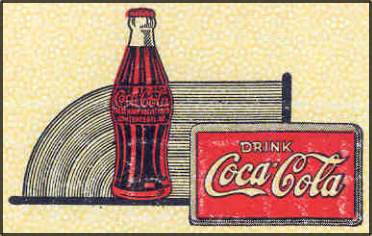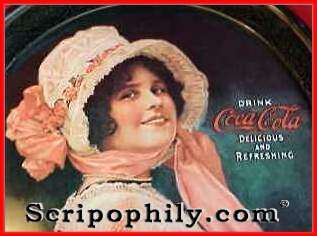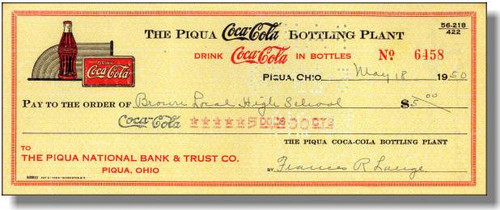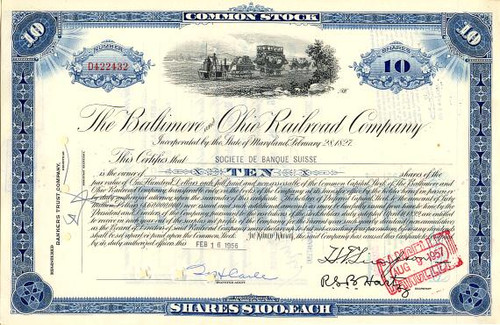Beautifully engraved EARLY check from the Coca Cola Bottling Company of Piqua, Ohio issued in the 1950's. This historic document and has a border around it with a vignette of a Coca - Cola Bottle and the Coca Cola logo. This also had the new promotional phrase "Drink Coca Cola" printed on the check. This item is hand signed by F. Lange and is over 48 years old. 
Check Vignette History of Coca Cola In 1886 Dr. John Stith Pemberton first introduces Coca-Cola in Atlanta, Georgia. The pharmacist concocted a caramel-colored syrup in a three-legged brass kettle in his backyard. He first "distributes" Coca-Cola by carrying it in a jug down the street to Jacobs' Pharmacy. For five cents, consumers can enjoy a glass of Coca-Cola at the soda fountain. This year, sales of Coca-Cola average nine drinks per day. In 1891 Atlanta entrepreneur Asa G. Candler acquires complete ownership of the Coca-Cola business for $2,300. Within four years, his merchandising flair helps expand consumption of Coca-Cola to every part of the nation. By 1914, Candler had acquired a fortune of some $50 million. Baseball hall of famer Ty Cobb, a Georgia native, was another early investor in the company. 
In 1893 The trademark "Coca-Cola" name and script are registered with the U.S. Patent and Trademark Office. Dr. Pemberton's partner and bookkeeper, Frank M. Robinson, suggested the name and penned "Coca-Cola" in the unique flowing script that is famous worldwide today. Mr. Robinson thought "the two C's would look well in advertising." Coca-Cola" was first sold for 5¢ a glass as a soda fountain drink at Jacob's Pharmacy in Atlanta, Georgia. In 1894, Joseph A. Biedenharn, owner of the Biedenharn Candy Company in Vicksburg, Mississippi, first bottled "Coca Cola." By 1903, the use of cocaine was controversial and "Coca-Cola" decided to use only "spent coca leaves." It also stopped advertising "Coca-Cola" as a cure for headaches and other ills. In 1929, after his death, Griggs Candler's family sold the interest in "Coca-Cola" to a group of businessmen led by Ernest Woodruff for $25 million. Woodruff was appointed president of "Coca-Cola" on April 28, 1923 and stayed on the job until 1955. The Piqua area was an important Indian settlement and trading area for many years before the city was planned. Originally named "Washington" after the nation's first president, the town's name was changed to Piqua in 1816. In the early and mid-1800s, the city grew to become the largest in Miami County, and only recently lost that designation to Troy . When residents lost out to Troy in their bid to become the county seat, they responded by building the city's most famous landmark -- the Fort Piqua Hotel. Finished in 1891, for years it was a luxurious hotel that hosted presidents and famous figures in the entertainment industry. A group of freed slaves settled in a part of Piqua known as Rossville in the 1840s. The black cemetery there is one of the oldest in the area, and one of the original houses has been turned into the Rossville Museum. The museum honors the original freed slaves and their descendants. Piqua was known for a time as the "Atomic City," since it was one of the first cities in the nation to have a nuclear power plant. That early plant has long since closed. Today, Piqua is home to many home grown business large and small.

Check Vignette









